When we think of deserted hotels with haunting corridors, our minds might immediately wander to classics like “The Shining.” Yet, Stewart Thorndike’s “Bad Things” offers a new journey through such haunting hallways, blending familiar horror elements with fresh narrative twists. The film starts with the protagonist, Ruthie, portrayed with depth by Gayle Rankin, arriving at a seemingly desolate hotel. This isn’t just any hotel; it bears connections to her past, and as the narrative unfolds, we realize that the eerie silence of the rooms holds stories of their own.
Director Stewart Thorndike, known for his unique approach to horror, takes the helm of this film. His vision is supported by a cast that includes Gayle Rankin in the lead role, accompanied by a talented ensemble of actors, each bringing their own flavor to this chilling tale.
In the forthcoming sections, we’ll dive deep into the world of “Bad Things,” exploring its setting, characters, and how it stands in comparison to other iconic films in the horror genre. Whether you’re a die-hard horror fan or just curious about this new release, our review promises insights and reflections that might just make you see the film in a new light. So, grab your popcorn and let’s embark on this cinematic journey together.
Echoes of the Past and the Dawn of New Horrors
Every now and then, a film comes along that, while paving its own unique path, evokes memories of cinematic masterpieces of yesteryears. “Bad Things” is one such film. Its echoes of “The Shining” are undeniable, yet it is far from being a mere shadow of the classic. Let’s delve into these resemblances and understand how “Bad Things” crafts its own identity amidst them.
The deserted hotel setting is the most apparent link between the two films. Just as the Overlook Hotel in “The Shining” becomes a character in its own right, the haunting halls and silent rooms of the hotel in “Bad Things” play a pivotal role. The sense of isolation, the eerie quiet, the unsettling ambiance – all these elements are reminiscent of Stanley Kubrick’s masterpiece. But where “The Shining” focuses on the gradual descent into madness of its central character, Jack Torrance, “Bad Things” offers a more layered narrative, exploring interpersonal dynamics among a group of individuals, each with their own ghosts and traumas.
Then there are the more direct nods. The spectres in “Bad Things” – joggers in this case – can’t help but remind viewers of the iconic twins from “The Shining.” Their presence, while paying homage, brings in its own set of enigmas, adding depth to the film’s storyline.
However, what truly sets “Bad Things” apart is how it doesn’t just rest on these parallels. The film is a melting pot of references, drawing inspiration from various corners of the horror genre, yet always ensuring it doesn’t lose its unique voice. A scene with Ruthie holding a chainsaw might immediately draw comparisons to “The Texas Chainsaw Massacre.” Yet, in a refreshing twist, the chainsaw isn’t wielded with malice, but rather to cut down a tree. It’s a playful nod, taking a symbol of horror and turning it on its head.
Another intriguing comparison made by some reviewers is with the recent German horror film “Schlaf,” hinting at a blend of thematic elements and perhaps even a spiritual connection with “The Eternal Daughter.” These references, while subtle, enrich the narrative, providing layers for discerning viewers to peel back and ponder upon.
Visually too, “Bad Things” wears its inspirations on its sleeve. The stark, cold interiors of the hotel, the play of shadows, and even the color palette at times seem to tip their hat to classic horror films. Yet, it’s the way these elements are combined, often with a modern twist, that gives the film its unique visual identity. There’s a sense of familiarity, but it’s always accompanied by something unexpected, ensuring viewers are kept on their toes.
While it’s tempting to see “Bad Things” through the lens of the films it pays homage to, it would be a disservice to pigeonhole it as just another derivative horror movie. Stewart Thorndike has masterfully blended inspiration with innovation, crafting a film that stands tall in its own right, even as it nods respectfully to the giants that came before it.
The Silent Walls that Whisper Tales
Have you ever walked into a room and felt a chill, not from the cold but from the weight of untold stories? That’s the sensation “Bad Things” conjures with its haunting hotel setting. It’s not just a location; it’s a living, breathing entity that envelops the story, adding layers of tension and suspense.
The hotel, with its labyrinthine corridors and vast, empty ballrooms, seems to be stuck in a perpetual twilight, neither fully lit nor plunged in darkness. It’s this interplay of light and shadow that crafts an unsettling ambiance right from the outset. The walls might be freshly painted, and the chandeliers might sparkle, but there’s an underlying decay, a sense of something having gone terribly wrong. This isn’t a place for joyous vacations; it’s a place where secrets are buried, perhaps even literally.
Isolation plays a significant role in amplifying the horror. There’s an eerie quiet, occasionally interrupted by distant, unidentifiable sounds, making one wonder if the hotel is truly as deserted as it seems. This silence is more than just the absence of noise; it’s a reflection of the emotional isolation the characters experience. Each one, in their own way, grapples with personal demons, and the hotel, in all its desolate glory, seems to mirror their internal turmoil.
Consider Ruthie, for instance. As she navigates the hotel’s sprawling spaces, there’s a palpable sense of her trying to escape something, perhaps her past, perhaps her own thoughts. The vastness of the hotel, instead of offering solace, seems to trap her further, making her confront the very things she wishes to run away from.
The other characters aren’t spared either. The hotel’s oppressive atmosphere seems to heighten their anxieties, fears, and insecurities. Conversations that might seem mundane in a different setting take on a sinister undertone here. Every laughter echoes a bit too loudly, every whisper seems fraught with hidden meanings, and every closed door hides potential horrors.
Thorndike uses the setting masterfully, not just as a backdrop but as a tool to delve deeper into the characters’ psyches. The isolation isn’t just physical; it’s emotional, psychological, and at times, even existential. In a way, the hotel becomes a reflection of the characters’ minds – chaotic, fragmented, and teetering on the edge of darkness.
The real genius, however, lies in the film’s ability to make the audience feel this isolation. As viewers, we’re not just passive observers; we’re drawn into this world, feeling every chill, hearing every creak, and dreading every shadow. The hotel, in all its eerie magnificence, doesn’t just house the story; it becomes an integral part of it, making “Bad Things” a cinematic experience that lingers long after the credits roll.
- Also Read: Stray Gods: The Roleplaying Musical Review – A Murder Mystery Brought To Life Through Song
Unraveling the Threads of “Bad Things”
At the heart of “Bad Things” lies Ruthie, a character whose complexity is beautifully brought to life by Gayle Rankin. On the surface, Ruthie seems like a woman returning to a place imbued with memories, but as the narrative unfolds, we see layers of her persona peel away, revealing a whirlwind of emotions and past scars.
Her relationship with the hotel is not just as a visitor; it’s deeply personal. This is a place that holds fragments of her past, and with every step she takes, she’s forced to confront them. But it’s not just the walls that echo with memories; it’s the people she’s with. Each interaction, be it a casual conversation or a heated argument, is a window into her psyche, revealing her fears, hopes, and vulnerabilities.
A significant aspect of Ruthie’s journey is her relationship dynamics. The hotel setting, with its eerie ambiance, serves as a crucible, intensifying the emotions and tensions between her and the other characters. Her interactions, especially with her girlfriend Cal, oscillate between moments of tenderness and bouts of uncertainty. The film subtly delves into the intricacies of their bond, hinting at deeper issues and unspoken words.
Unravel the Mystery of Suitable Flesh: “Are you ready for a horror experience that defies the ordinary? Check out our Suitable Flesh film review to see how this movie intertwines sex, violence, and psychological terror, creating a unique homage to classic horror.”
Supporting Characters: The Pillars of the Tale
While Ruthie is undoubtedly the focal point, the supporting cast of “Bad Things” is instrumental in fleshing out the narrative. Each character, with their unique backstory and motivations, adds depth to the story, making it a rich tapestry of human emotions and relationships.
Take, for instance, Cal and Maddie. Portrayed by trans actors Hari Nef and Rad Pereira, they bring a fresh perspective to the tale. Their presence is not just a nod to inclusivity but serves as a reflection of the diverse world we live in. Their interactions, especially with Ruthie, are poignant, showcasing the myriad ways in which relationships can be both a source of comfort and conflict.
Fran, played by Annabelle Dexter-Jones, is another character that stands out. Her unpredictability, stemming from a recent personal ordeal, adds an element of suspense to the narrative. Her dynamics with Ruthie, tinged with a sense of unease, offer some of the film’s most gripping moments.
While “Bad Things” is undeniably Ruthie’s journey, it’s the ensemble cast that elevates the film. Their interactions, set against the backdrop of the haunting hotel, form the crux of the story, making it a compelling exploration of human nature and relationships.
When Familiar Shadows Take Uncharted Paths
Horror, as a genre, has a way of holding a mirror to our deepest fears, making the familiar seem strange and the mundane terrifying. “Bad Things” ventures into this shadowy realm, but not just to retread well-worn paths. Instead, it offers a fresh perspective, weaving a tale that both pays homage to classic horror tropes and redefines them.
At its core, “Bad Things” uses some of the most recognizable elements of horror: an isolated setting, mysterious apparitions, and an underlying sense of dread. The eerily quiet hotel, with its dimly lit corridors and hauntingly empty rooms, is reminiscent of countless horror tales where places become characters in their own right. However, where many films might use such a setting to unleash a series of jump scares, “Bad Things” takes a subtler route. The horror here is psychological, stemming from the characters’ own traumas and the weight of their pasts.
This deviation from the typical is what sets the film apart. Instead of external monsters, the real threat often comes from within, from unresolved issues and simmering tensions. A scene where a chainsaw is wielded not as a weapon of terror but as a tool to cut down a tree exemplifies this approach. It’s a playful subversion, taking an emblematic instrument of horror and using it in a benign manner. Such moments, scattered throughout the film, challenge our expectations, making us rethink what horror truly means.
The film’s tone further emphasizes this unique approach. Instead of relentless dread, there’s an ebb and flow to the tension. Moments of genuine warmth and camaraderie between characters are juxtaposed with sequences of unease and uncertainty. This balance ensures that the audience is never truly at ease, always anticipating the next twist.
And twists there are aplenty. While some are rooted in the characters’ backstories, others play with the genre’s conventions. These unexpected turns, both in narrative and visual storytelling, keep the viewers engaged, making “Bad Things” more than just a horror film. It’s an exploration of the human psyche, of the monsters we carry within, and of the thin line between reality and nightmare.
“Bad Things” stands as a testament to the evolution of the horror genre. While it respects the traditions, it’s not shackled by them. Through its unique narrative choices and tonal shifts, it offers a fresh, introspective take on horror, reminding us that sometimes, the most terrifying demons are the ones we create ourselves.
Stewart Thorndike’s Unique Gaze on Horror
In the vast landscape of horror cinema, Stewart Thorndike emerges as a visionary who isn’t afraid to tread uncharted territories. With “Bad Things,” he paints a canvas that is as haunting as it is beautiful, showcasing a deep understanding of the genre while challenging its norms.
One of the most striking aspects of Thorndike’s approach is his emphasis on character-driven horror. Instead of relying solely on external threats, he delves deep into the psyche of his characters, making their internal conflicts the real source of terror. This focus on psychological horror, rather than overt scares, creates a slow-burning tension that lingers, making every glance and every conversation laden with meaning.
Visually, Thorndike crafts a world that is both familiar and eerily off-kilter. The hotel, a central character in its own right, is depicted not as a dilapidated haunted house but as a seemingly regular place, making its underlying menace even more unsettling. His choice of muted color palettes and deliberate camera movements heightens the sense of unease, making the ordinary seem otherworldly.
Another notable directorial choice is the film’s play with genre references. While it’s evident that Thorndike draws inspiration from iconic horror films, he never lets “Bad Things” become a mere pastiche. Instead, he uses these references as a foundation, building upon them to create something uniquely his own. Scenes that might start off as familiar quickly take unexpected turns, reflecting Thorndike’s commitment to subverting audience expectations.
Furthermore, his decision to center the narrative around a diverse cast, including trans actors in pivotal roles, is commendable. It not only adds depth to the story but also reflects a more inclusive vision, broadening the horizons of mainstream cinema.
Stewart Thorndike’s “Bad Things” is a testament to his distinct voice as a filmmaker. His choices, both in narrative and visual storytelling, showcase a desire to push boundaries, to challenge and redefine what horror can be. Through his lens, “Bad Things” becomes more than just a film; it’s a reflection on human nature, on our fears, and on the shadows that lurk within us all.
Discover the Intricate Layers of Trauma and Survival in Cinema: Are you intrigued by the complex portrayal of psychological themes in movies? Don’t miss our in-depth review of “The Marsh King’s Daughter”, a film that navigates the turbulent waters of childhood trauma and its lasting impact.
Wrapping Up the Horrors: “Bad Things” in Retrospect
As the curtains fall on “Bad Things,” what remains is a lingering sense of unease, a testament to the film’s ability to grip its audience. Stewart Thorndike’s offering to the horror genre is both a nod to its legacy and a bold step forward.
Among the film’s most notable strengths is its character-driven narrative. Rather than relying on the tried-and-tested jump scares, “Bad Things” delves deep into the human psyche, unearthing the fears and traumas that lie therein. The hotel, with its haunting corridors and silent rooms, serves not just as a backdrop but as a reflection of the characters’ internal struggles, making the horror personal and palpable. Additionally, the film’s diverse cast and the depth they bring to their roles add layers of complexity, ensuring that “Bad Things” is as much about human relationships as it is about horror.
However, no film is without its flaws. At times, the narrative seems to meander, losing its tight grip on the audience. Some might find the subtlety of its horror too understated, yearning for more overt moments of terror. The plethora of genre references, while masterfully integrated, might feel overwhelming to some, occasionally overshadowing the film’s unique voice.
Yet, when placed within the broader spectrum of the horror genre, “Bad Things” stands out. It challenges conventions, asking viewers to rethink their definitions of horror. Instead of external monsters, it presents the monsters within, making it a deeply introspective experience.
As for its legacy, only time will tell. But one thing is certain: “Bad Things” is bound to be a talking point among horror aficionados for years to come. It serves as a reminder that horror can be subtle, that it can be reflective, and that, at its best, it can offer a mirror to the human soul, revealing the shadows that lurk therein.
The Review
Bad Things
"Bad Things" is a mesmerizing dance between classic horror elements and fresh narrative techniques. While it might tread a slower, more introspective path than some might expect, it offers a deep dive into the human psyche, challenging our perceptions of fear and introspection. Stewart Thorndike showcases a unique vision, seamlessly blending diverse character arcs with a haunting setting, delivering a film that's both unsettling and thought-provoking. While it has its occasional missteps, the film's strengths far outweigh its weaknesses, making it a must-watch for those seeking a different flavor of horror.
PROS
- Character-driven narrative that delves deep into the human psyche.
- Unique take on the horror genre, emphasizing psychological terror over jump scares.
- Diverse cast that brings depth and authenticity to their roles.
- Masterful use of setting, with the hotel serving as a central, haunting character.
- Clever integration of classic horror references, offering both homage and fresh twists.
CONS
- Occasionally meandering narrative that might lose grip on some viewers.
- Subtlety of horror might be too understated for those seeking overt terror.
- The plethora of genre references can sometimes overshadow the film's unique voice.
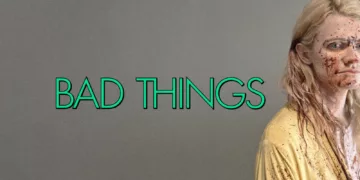








































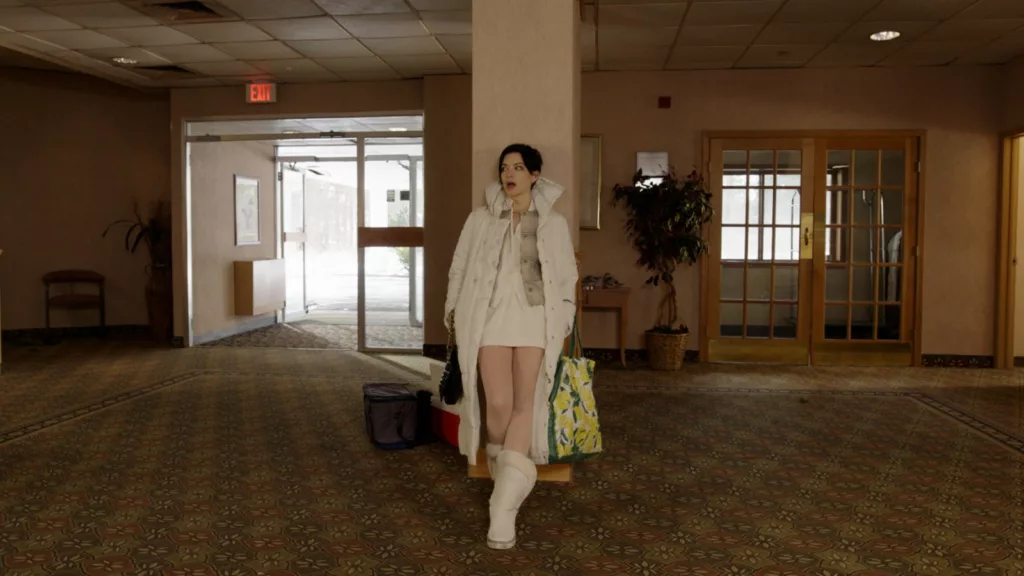
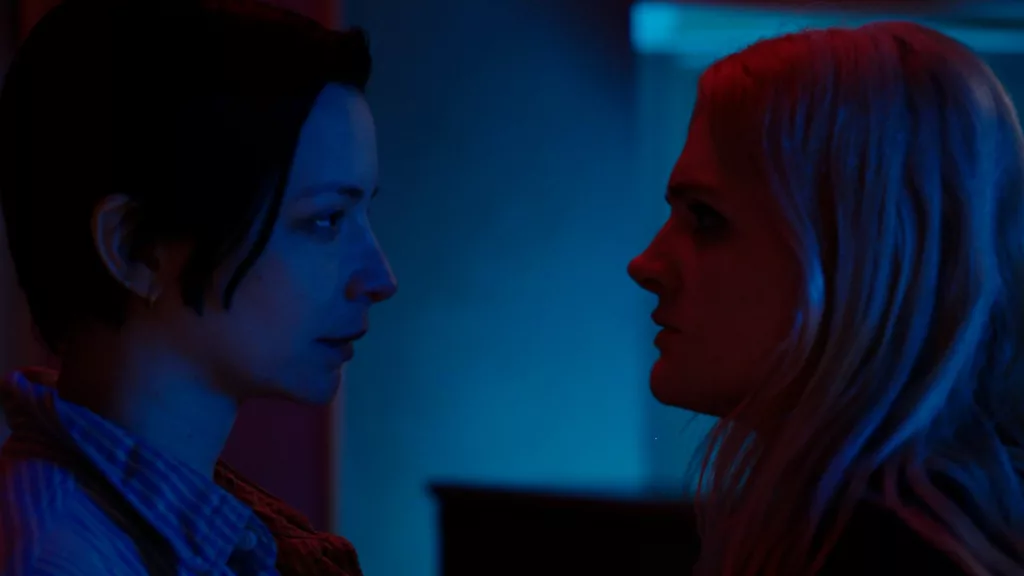
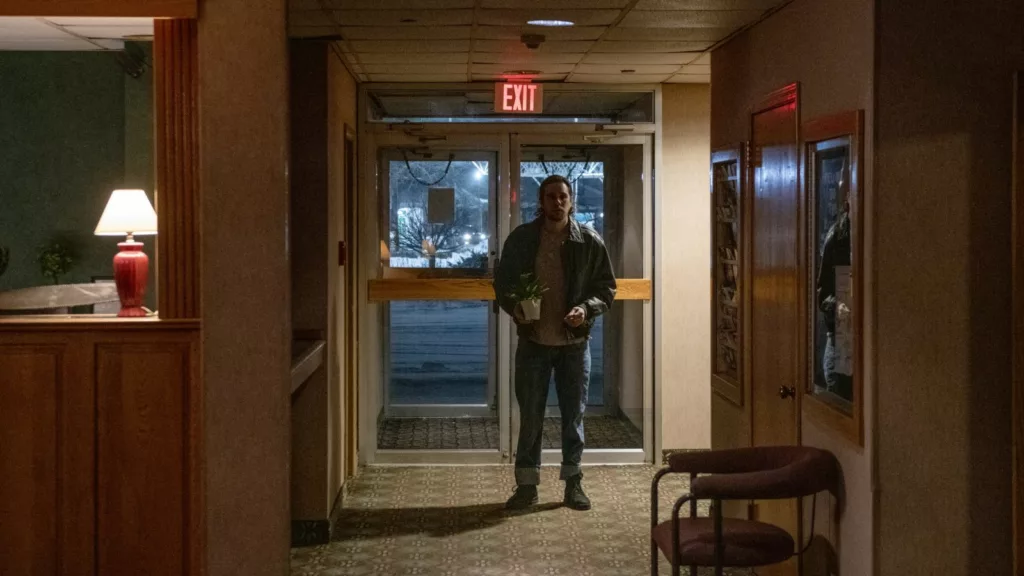

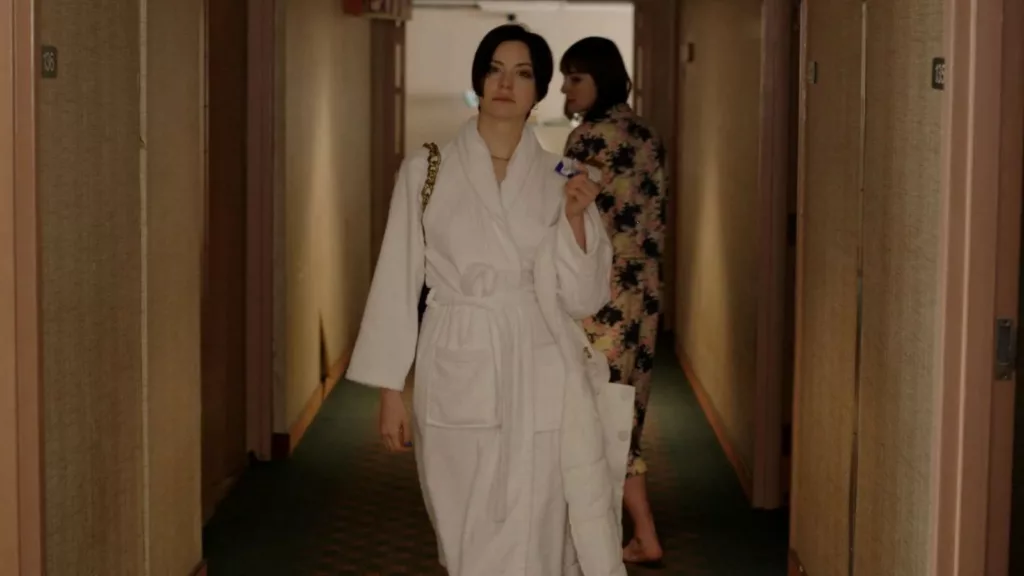


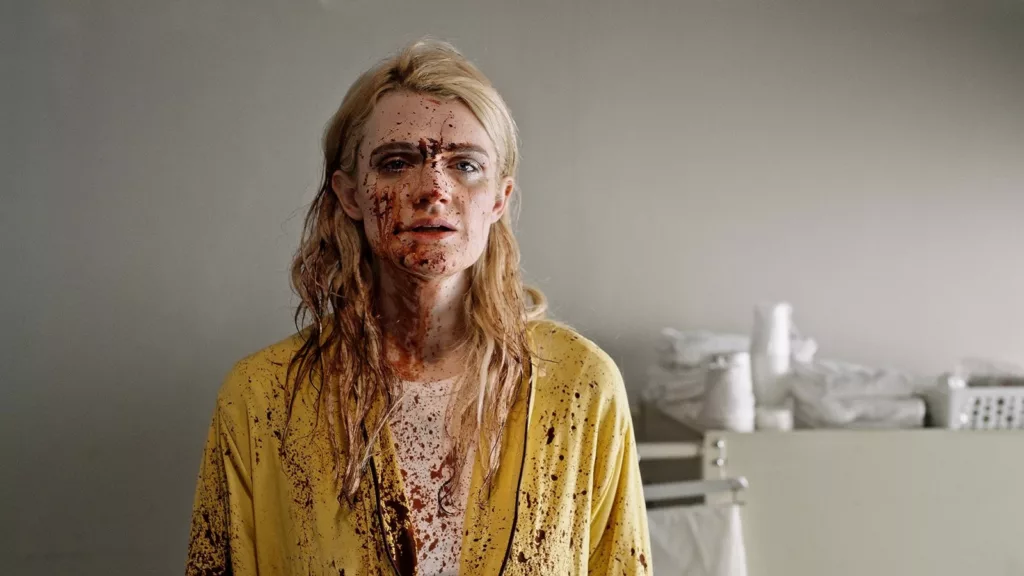








Discussion about this post